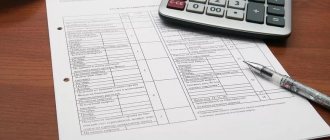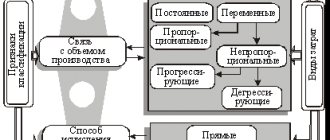The accrual of taxes and their payment is reflected in account 68 “Calculations for taxes and fees”. For more convenient accounting, account 68 is divided into several sub-accounts, each of which takes into account different taxes. Such a division will make accounting more transparent and make it clear which tax is owed to the budget, and which tax the organization owes. Similarly, account 69 “Calculations for social insurance and security” is divided into subaccounts. In the article we will talk about the features of accounting for account 68, and also consider typical transactions and examples of transactions with taxes and fees.
Count 68: features of use
Account 68 is used to reflect transactions for the calculation and transfer of taxes and fees that the organization pays to the budget of the federal and regional levels. As a rule, in account 68, enterprises post the amounts of obligations for value added tax (VAT), income tax (INP), property tax, etc.
The accrual of tax amounts is reflected in K68; when transferring funds to the budget and when accepting tax for deduction, D68 is used.
Let's look at typical wiring:
| Debit | Credit | Description | Document |
| 68 | 19 | The tax amount is written off as a credit (for the purchase of goods, services, works) | Consignment note, act |
| 68 | 50, 51, 55 | The tax amount is transferred to the budget | Payment order, cash order |
| 10, 15 | 68 | Inclusion in the cost of materials (stocks) is the amount of non-refundable tax | Packing list |
| 20, 23, 29 | 68 | The amount of accrued tax is taken into account in production expenses | Acts, invoices, limit-fence cards |
| 44 | 68 | Accrued tax is included in sales expenses | Acts, invoices, expense reports |
What does the debit of account 70 show: postings
On the debit side of account 70 the following are recorded:
- Withholding personal income tax from wages.
The posting used here is: Dt 70 Kt 68 (13% (or 30% if the physicist is a non-resident) of the amount reflected in the accrued wages). The amount of salary payable on account 70 decreases, because the employer, being a tax agent, withholds the calculated personal income tax, increasing the credit balance on the account. 68 (personal income tax subaccount).
The subsequent transfer of personal income tax to the budget is reflected by posting Dt 68 Kt 51. Other deductions from wages are also possible. For example, alimony under a writ of execution:
- Dt 70 Kt 76 - alimony withheld;
- Dt 76 Kt 51 - alimony is transferred to the recipient.
- Payment of wages.
Posting Dt 70 Kt 51 (if the salary is issued to the current account) or Dt 70 Kt 50 (if the salary is issued in cash from the cash register). The amount to be issued is the one that remains on the credit of account 70 (credit balance), i.e. minus personal income tax (and other deductions, if any).
In practice, debit and credit entries can be visualized using the account balance sheet. Let's consider its specifics.
Video lesson: Account 68 in accounting.
Video lesson on basic operations on accounting account 68, key entries, practical examples. The lesson is taught by consultant and expert of the “Accounting for Dummies” website, chief accountant N.V. Gandeva. ⇓
You can download the presentation for the video lesson from the link below.
Download the presentation “Account 68 in accounting” in PDF format
| Buy ★ bestselling book “Accounting from scratch” for dummies (understand how to do accounting in 72 hours) > 8000 books purchased |
Reflection of transactions with VAT
Depending on the type of activity, an enterprise can carry out various VAT transactions. We will consider the main such operations using examples.
VAT when making a contribution to the authorized capital of another organization
In January 2016, Yantar JSC purchased from Rubin LLC a batch of construction and repair materials worth 48,350 rubles, VAT 7,375 rubles. In March 2016, Yantar JSC acquired a stake in the authorized capital of Amethyst JSC. The cost of the share is 54,280 rubles. Construction materials previously purchased from Rubin LLC were transferred to pay off the debt on the contribution to the authorized capital of Amethyst JSC.
These transactions were reflected in the accounting of Yantar JSC with the following entries:
| Debit | Credit | Description | Sum | Document |
| 10 | 60 | Construction materials purchased from Rubin LLC have been received (RUB 48,350 – RUB 7,375) | RUB 40,975 | Packing list |
| 19 | 60 | The amount of VAT on purchased building materials is reflected | RUR 7,375 | Invoice |
| 68 VAT | 19 | VAT on the cost of building materials is accepted for deduction | RUR 7,375 | Invoice |
| 58 | 76 | The acquisition of a stake in Amethyst JSC was taken into account | RUR 54,280 | Contract of sale |
| 76 | 10 | Reflected the transfer of construction materials to pay off the debt on the contribution to the authorized capital of Amethyst JSC | RUB 40,975 | Transfer and Acceptance Certificate |
| 19 | 68 VAT | The amount of VAT on purchased building materials, previously accepted for deduction, has been restored | RUR 7,375 | Certificate of acceptance and transfer of construction materials, Invoice |
| 58 | 19 | The amount of VAT recovered when making a contribution to the authorized capital of “Amethyst” is taken into account | RUR 7,375 | Certificate of acceptance and transfer of construction materials, Invoice |
| 76 | 91.1 | The amount of income from the transfer of building materials is taken into account (RUB 54,280 – RUB 40,975) | RUB 13,305 | Certificate of acceptance and transfer of construction materials, Invoice |
| 68 Income tax | 99 PNO | The amount of permanent tax asset is taken into account (RUB 13,305 * 20%) | RUB 2,661 | Accounting certificate-calculation |
VAT on sales of goods
In April 2015, JSC Everest sold LLC Kazbek a batch of goods - 12 inflatable boats for fishing:
- selling price of one boat – 94,350 rubles, VAT 14,392 rubles;
- unit cost of goods – 73,150 rubles.
The accountant of Everest JSC reflected these transactions with the following entries:
| Debit | Credit | Description | Sum | Document |
| 45 | 43 | The cost of a batch of boats sold by Kazbek LLC was taken into account (RUB 73,150 * 12 units) | 877.800 rub. | Costing |
| 76 | 68 VAT | The amount of VAT is reflected on the cost of sales (RUB 14,392 * 12 units) | RUB 172,704 | Invoice |
| 51 | 62 | Funds have been credited from Kazbek LLC as payment for a batch of inflatable boats (RUB 94,350 * 12 units) | 1,132,200 rub. | Bank statement |
| 62 | 90.1 | The amount of revenue from the sale of boats is taken into account | 1,132,200 rub. | Packing list |
| 90.2 | 45 | The cost of boats sold is written off as expenses | 877.800 rub. | Costing |
| 90.3 | 76 | The amount of VAT on revenue is taken into account | RUB 172,704 | Invoice |
VAT on the amount of advances received
An agreement was concluded between JSC Stimul and LLC Rubikon for the supply of cabinet furniture worth RUB 1,143,850, VAT RUB 174,486. On January 12, 2016, the supplier JSC Stimul received an advance payment in the amount of 100% of the cost of furniture delivery. On January 15, 2016, furniture was shipped from the warehouse of Stimul JSC to Rubicon LLC.
In the accounting of Stimul JSC, the accountant made the following entries:
| Debit | Credit | Description | Sum | Document |
| 51 | 62.2 | Funds have been credited from Rubikon LLC as an advance payment for the supply of cabinet furniture | RUB 1,143,850 | Bank statement |
| 76 Advances received | 68 VAT | The amount of VAT on the prepayment received is taken into account | RUR 174,486 | Invoice |
| 62.1 | 90.1 | Furniture was shipped from the warehouse of Stimul JSC to Rubikon LLC. | RUR 174,486 | Packing list |
| 90.3 | 68 VAT | The amount of tax on the sale of furniture is reflected | RUR 174,486 | Invoice |
| 62.2 | 62.1 | The repayment of the debt of Rubicon LLC with the previously transferred advance is reflected | RUB 1,143,850 | Bank statement, delivery note |
| 68 VAT | 76 Advances received | The VAT amount is accepted for deduction | RUR 174,486 | Invoice |
VAT upon termination of the contract
In June 2015, JSC Europe entered into an agreement with LLC Asia to carry out work to repair the production line of workshop No. 2. The cost of the work (327,350 rubles, VAT 49,934 rubles) was transferred as an advance to the bank account of Asia LLC. In August 2015, the contract with Asia LLC was terminated, the work was not completed, and the funds were returned to the account of JSC Europe.
When recording transactions, the accountant of Asia LLC made the following entries:
| Debit | Credit | Description | Sum | Document |
| 51 | 62 Advances received | Funds have been credited as an advance payment from JSC Europe for the repair of the production line of workshop No. 3 | RUR 327,350 | Bank statement |
| 62 Advances received | 68 VAT | The amount of VAT accrued on the advance received from JSC “Europe” | RUR 49,934 | Invoice |
| 68 VAT | 51 | The amount of VAT transferred to the budget is 1/3 of the amount of quarterly obligations (RUB 49,934 / 3 months) | RUR 16,644 | Tax return |
| 62 Advances received | 51 | Funds were transferred to JSC “Europe” as a return of a previously received advance | RUR 327,350 | Payment order |
| 68 VAT | 62 Advances received | The VAT amount is accepted for deduction | RUR 49,934 | Tax return |
VAT on free transfer of property
JSC “Mecenat” carried out a free transfer of diagnostic equipment to the “Health Center”:
- cost of equipment - 874,650 rubles;
- the price of diagnostic equipment according to the assessment report is RUB 1,112,420.
JSC “Mecenat” made the following postings:
| Debit | Credit | Description | Sum | Document |
| 91.2 | 41 | Transferred equipment is reflected in expenses | RUR 874,650 | Packing list |
| 91.2 | 68 VAT | The amount of VAT is taken into account (RUB 1,112,420 * 18% / 118%) | RUR 169,691 | Transfer and Acceptance Certificate |
Types of business transactions in accounting: how to determine the type, examples, postings
Last update: 01/09/2020
Significant events in the life of an enterprise are subject to mandatory recording and accounting. Any production or other business processes combine a set of activities that are reflected in the financial statements. Depending on the nature of the impact on the balance sheet of a legal entity, it is customary to distinguish different types of business transactions.
Definition of business transactions
A business operation (HO) means a specific act that led to transformation:
- the composition of the organization’s property or the procedure for its placement;
- sources that form the property mass of a business entity;
- company budget;
- fixed and reserve funds;
- ownership structures.
On the topic of the article! Compensation for an insured event of wiring
Note. Any significant change is controlled by creating an accounting entry. To record data, documents are used that have become the basis for the implementation of management.
Business transactions reflected in accounting affect the capital of a legal entity. This impact takes the form of a decrease or increase in the assets and liabilities of the enterprise. However, no manipulations should upset the balance of a business entity.
Figure 1. Balance sheet items
Types of business operations
In the activities of a company that produces goods or provides services, the following processes are distinguished:
- on supply;
- on production;
- on implementation.
Each procedure includes a set of certain manipulations. In accordance with this, actions are distinguished regarding the material support of the organization, the creation of products, their sale or the provision of services.
Depending on the object that is exposed, manipulations in household activities are also classified into:
- material - movement of inventory items;
- financial - turnover of funds;
- settlement - making settlements with partners.
Classical accounting theory identifies 4 main types of business transactions. The classification is based on the nature of the influence on the organization’s balance sheet. The impact can be expressed:
- through permutations - changes in the composition of only the asset or liability;
- through modifications - a decrease or increase in both the active and passive components.
Figure 2. Based on the way they influence balance sheet items, there are 4 types of accounting transactions
Type I
Type I includes facts that affect exclusively asset (A) of the balance sheet. At the same time, the accounting currency remains stable. The essence of the changes is that one asset item increases due to a decrease in another. Schematically it looks like this:
A + A –
The consequence of such financial assets is a transformation of the composition of the property, but not its total value. The formula used for this type of manipulation:
A + B (Dt) C1- B (Kt) C2= P,
where A is a balance sheet asset, O is turnover, Dt is debit, Kt is credit,
C - score.
Posting examples:
- materials sent to production - Dt20 Kt10;
- cash withdrawal from the cash register for registration - Dt71 Kt50;
- buyers paid for the goods - Dt51 Kt60.
Situation: 10,000 rubles were withdrawn from the bank account of Brand LLC, and the cash was transferred to the company’s cash desk. The total capital value has not changed. The position “Cash account” decreased by 10,000, and the position “Cash” increased by 10,000. The accounting entry is Dt50 Kt51.
Figure 3. Example for group 1
Type II
Group II - these are events that result in changes only to items on the liability side (P) of the balance sheet. The accounting currency remains stable. The sources of accumulation of property of a business entity are transformed, but the cost of funds remains at the same level.
Schematically, such chemical weapons are marked as follows:
P + P –
Formula used:
A = P + O(Kt) C1 – O(Dt) C2.
Typical wiring:
- transfer of short-term debt to long-term - Dt66 Kt67;
- formation of a reserve fund - Dt84 Kt82;
- deductions of personal income tax from employee salaries - Dt70 Kt68.
Situation: Winter Night LLC received a loan from the bank in the amount of 20,000 rubles. Credit funds paid an advance to the supplier of raw materials in the amount of 20,000 rubles. As a result of these actions, the capital currency did not change, but the liability items - “Loans” and “Settlements with suppliers” - shifted by 20,000 rubles. respectively. The entry in the reporting is Dt60 Kt66.
Figure 4. Example for group 2
This type of financial accounting involves an increase in the accounting currency, since both assets and liabilities grow. The schematic representation looks like this:
A + P +
As a result of actions under type III, the legal entity’s property increases, but the volume of obligations also increases. The formula used in this case:
A + O (Dt) C1 = P + O (Kt) C2.
Examples of postings for business transactions:
- wages accrued - Dt20 Kt70;
- loan received - Dt51 Kt66;
- the purchase of goods has been completed - Dt41 Kt60.
Situation: The supplier shipped goods worth 50,000 rubles to the warehouse of Lunokhod LLC. The registration of these accounting actions is Dt41 Kt60. As a result of the shipment, the currency value in the enterprise’s reporting changed: the positions “Goods” and “Settlements with counterparties” increased.
Figure 5. Example for group 3
Type IV
Type IV household transactions also change the total amount of capital. At the same time, both liabilities and assets decrease. The manipulations of this group mean that the amount of liabilities has decreased, but at the same time the company has lost part of its property.
https://www.youtube.com/watch?v=Ng4Ifp0Mgog
Schematic representation of group IV:
A – P –
The following formula is used:
A – O (Dt) C1 = P – O (Kt) C2.
Examples of reporting:
- The last payment under the loan agreement was made - Dt66 Kt51;
- debt to suppliers was repaid - Dt51 Kt60;
- the receivables of the liquidated debtor company were canceled - Dt63 Kt76.
Situation: The company “New History” transferred 100,000 rubles to the bank. and thereby fully paid off the pre-signed loan agreement. This chemical equipment will be recorded in the report according to the scheme - Dt66 Kt51. As a result of these actions, the loan debt and the amount in the company’s account will decrease.
Figure 6. Example for group 4
Rules for determining the type of operation
Determining the type of economic manipulation includes several sequential steps. The initial stage involves the collection and verification of primary documents.
Each event in the financial and economic activity of a company has a dual nature. This feature is manifested in the fact that any enterprise is displayed in 2 accounting positions.
Figure 7. Double entry in accounting
Important. Accounts that are involved as a result of recording the same event are marked as corresponding, and the relationship between them is called correspondence.
To establish the type to which this or that fact of the economic life of an organization belongs, it is necessary to analyze:
- what accounts are reflected in the accounting entries;
- how the balance sheet currency has changed.
An accurate classification can only be made through a detailed analysis of the characteristics of the manipulations performed, taking into account the characteristics of the capital structure of the enterprise. Establishing the type for a specific business transaction also requires analyzing the characteristics and changes in the corresponding accounts.
Group Debit CreditBalance
| I | rises | is decreasing | without changes |
| II | is decreasing | rises | without changes |
| III | rises | rises | increases |
| IV | is decreasing | is decreasing | decreases |
Accounting for income tax transactions
Let's look at an example of calculating and paying income tax (IPT).
Based on the results of the 3rd quarter of 2015, Topaz JSC received a profit of 1,941,800 rubles. Reflecting transactions with income tax in the 3rd quarter of 2015, the accountant of Topaz JSC made the following entries:
| Debit | Credit | Description | Sum |
| 99 | 68 NnP | The amount of conditional income tax is reflected in expenses (RUB 1,941,800 * 20%) | RUR 388,360 |
| 99 | 68 NnP | The amount of PNO is reflected in expenses | RUR 33,750 |
| 68 NnP | 77 | The resulting deferred tax liability was taken into account | 4,350 rub. |
| 77 | 68 NnP | Repayment of deferred tax liability is reflected | 2,150 rub. |
| 09 | 68 NnP | The resulting deferred tax asset was taken into account | 9,120 rub. |
| 68 NnP | 09 | The repayment of the deferred tax asset is reflected | RUR 3,430 |
To determine the amount of NNP, the accountant of Topaz JSC made the following calculation:
the amount of the current NNP is 425,600 rubles. ((388,360 rub. + 33,750 rub. – (4,350 rub. – 2,150 rub.) + (9,120 rub. – 3,430 rub.)).
This indicator corresponds to the information specified in the tax return.
Payment for NNP was reflected in the following entries:
| Debit | Credit | Description | Sum | Document |
| 68 NnP | 51 | The amount of NnP for the 3rd quarter of 2015 was transferred to the federal budget | RUB 42,560 | Payment order |
| 68 NnP | 51 | The amount of NnP for the 3rd quarter of 2015 was transferred to the local budget | RUR 383,040 | Payment order |
Postings to account 70 for payroll
There are basic and additional wages. Depending on the type of remuneration, accounting entries are generated.
- Calculation of wages to employees and attribution to production costs: time-based and piece-rate wages, etc.
Dt 20;25;26;44 Kt 70
Let’s say wages have been accrued to employees of the main production of a bakery in the amount of 800,000 rubles, to storekeepers in the amount of 30,000 rubles, to salespeople in a production store in the amount of 40,000 rubles, and to administrative and management personnel in the amount of 200,000 rubles.
The bakery accountant will make the following entries in account 70:
| Dt | CT | Amount, rub | A document base | |
| 20 | 70 | Salaries accrued to bakery employees for main production | 800 000 | Payroll |
| 25 | 70 | Salaries paid to storekeepers | 30 000 | Payroll |
| 44 | 70 | Salaries accrued to store salespeople during production | 40 000 | Payroll |
| 26 | 70 | AUP salary accrued | 200 000 | Payroll |
- Accrual of vacation pay at the expense of the previously created reserve: Dt 96 Kt 70 – amount of vacation pay.
- Calculation of temporary disability benefits from the social insurance fund: Dt 69.1 Kt 70.
- Financial assistance was accrued from net (retained) profit: Dt 84 Kt 70.
- Accrued to the salaries of employees for the construction of an OS facility and attributed to the costs of capital implementation. investments: Dt 08 Kt 70.
- Accrued to wages of employees for dismantling fixed assets and charged to other expenses: Dt 91 Kt 70.
Subaccounts of account 68
68.1 – intended to reflect calculations for personal income tax.
68.2 – reflects information on the calculation and payment of VAT.
68.3 – intended for accounting for excise taxes.
68.4 – for the calculation and payment of income tax.
68.7 – the subaccount can be used by owners of vehicles paying transport tax.
68.8 – data on the calculation and payment of property tax is reflected.
Depending on the specifics of the activity and the applied tax regime, additional sub-accounts may be opened, for example:
68.11 – UTII
68.12 – simplified tax system
The debit of account 68 is intended to record paid amounts of taxes and fees transferred to the budget. The debit also indicates the VAT presented by suppliers and sent for deduction (reimbursement from the budget).
The debit of account 68 corresponds with the credit of accounts, which reflect the movement of funds (cash, non-cash), as well as with the credit of account 19 “VAT on purchased assets”.
The credit of account 68 is intended to reflect the amounts of accrued taxes that are subject to payment to the budget.
The credit to account 68 corresponds with the debit of various accounts, the choice of which depends on the type of tax.
Reflection of debit and credit on account 68
The debit of account 68 shows the amount of taxes that were actually transferred to the budget. This also includes VAT amounts that are debited from account 19.
The credit displays accrued amounts that must be transferred to the budget. All data must strictly coincide with the results of the reports submitted to the tax office.
Account credit means all amounts contributed to the budget on the basis of reports, declarations and other calculations. These include:
- profit and loss D99;
- settlements with the founders - D75;
- sales - D90;
- settlements with personnel regarding wages - D70.
Debit to account 68 includes:
- all amounts from the value added tax account for VAT;
- funds actually contributed to the budget from the current account.
To account for all amounts, entries are made: D68 K51 and D68 K19.
Display of credit and debit







